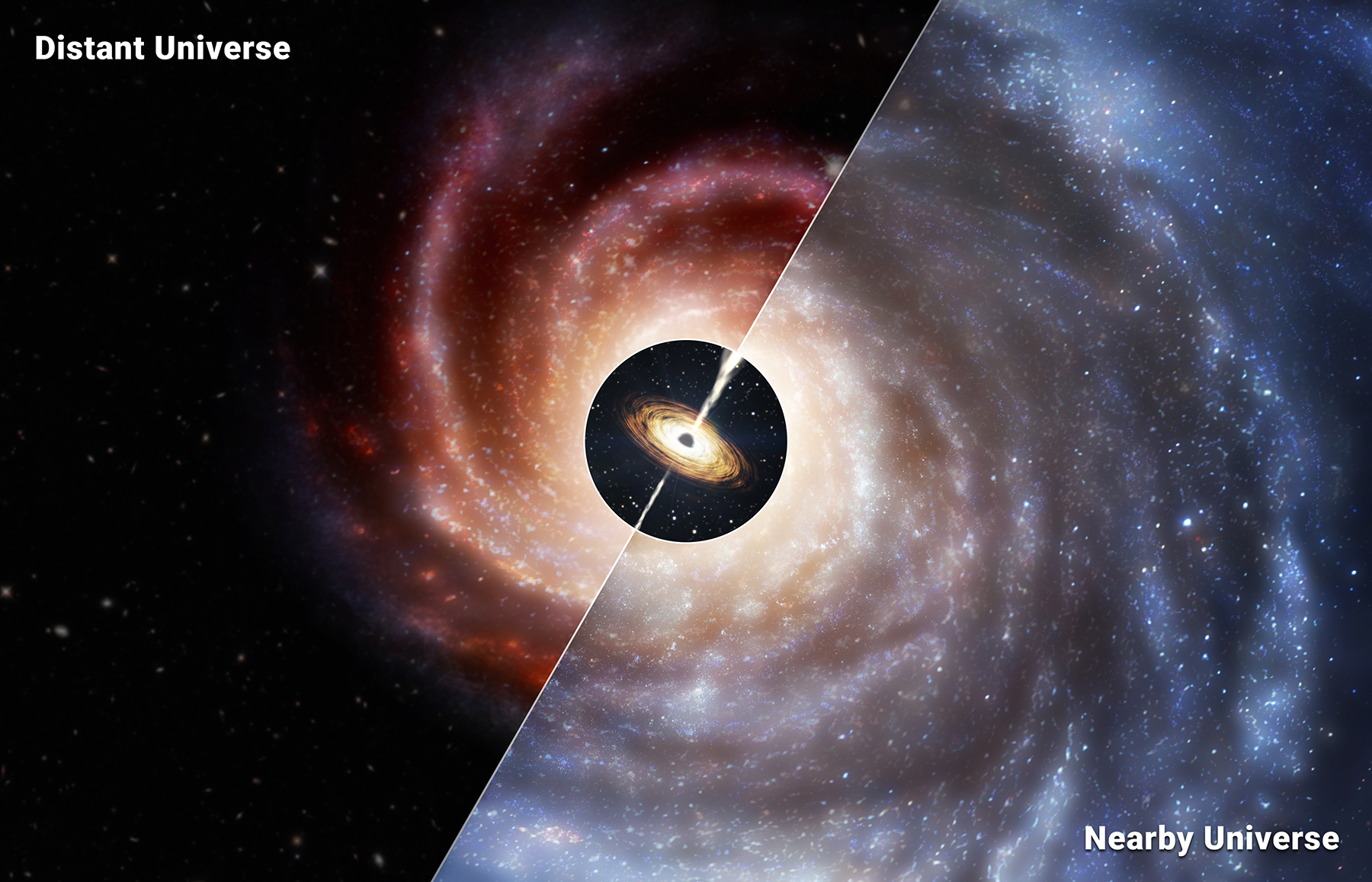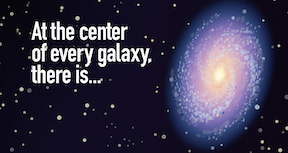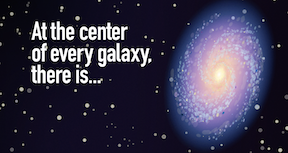Image List
-

Recent JWST observations of the distant universe have confirmed the existence of a population of infant galaxies containing black holes that are more massive than expected, given the size of their host galaxies. These black holes are between 10 and 100 times more massive than those found in similar galaxies in the nearby universe. In this artist's conception, a black hole (center) is contained in a small host galaxy in the distant universe (left). In the nearby universe (right), the same sized black hole would be hosted in a much bigger galaxy. The ratio between a galaxy's stellar mass and its black hole mass in the nearby universe is typically 1000:1, while distant black holes can be as massive as the galaxies they inhabit.
Credit: CfA/Melissa Weiss -
 (Unlabeled version of artist's conception) Recent JWST observations of the distant universe have confirmed the existence of a population of infant galaxies containing black holes that are more massive than expected, given the size of their host galaxies. These black holes are between 10 and 100 times more massive than those found in similar galaxies in the nearby universe. In this artist's conception, a black hole (center) is contained in a small host galaxy in the distant universe (left). In the nearby universe (right), the same sized black hole would be hosted in a much bigger galaxy. The ratio between a galaxy's stellar mass and its black hole mass in the nearby universe is typically 1000:1, while distant black holes can be as massive as the galaxies they inhabit.Credit: CfA/Melissa Weiss
(Unlabeled version of artist's conception) Recent JWST observations of the distant universe have confirmed the existence of a population of infant galaxies containing black holes that are more massive than expected, given the size of their host galaxies. These black holes are between 10 and 100 times more massive than those found in similar galaxies in the nearby universe. In this artist's conception, a black hole (center) is contained in a small host galaxy in the distant universe (left). In the nearby universe (right), the same sized black hole would be hosted in a much bigger galaxy. The ratio between a galaxy's stellar mass and its black hole mass in the nearby universe is typically 1000:1, while distant black holes can be as massive as the galaxies they inhabit.Credit: CfA/Melissa Weiss -

Astronomers have discovered that the supermassive black holes in the centers of early galaxies are much more massive than expected. We have known for a long time that there is a supermassive black hole at the center of every large galaxy. In the local universe, the ratio between stellar and black hole mass is about 1000 to 1. In the distant Universe, this ratio can be as little as 100 to 1, 10 to 1, or even 1 to 1, a finding that has profound implications for how the first population of black holes formed. In this animation, each yellow circle represents a large grouping of stars with a total mass similar to the black hole's mass.
Credit: Timothy Rauch -

(High resolution version of animation) Astronomers have discovered that the supermassive black holes in the centers of early galaxies are much more massive than expected. We have known for a long time that there is a supermassive black hole at the center of every large galaxy. In the local universe, the ratio between stellar and black hole mass is about 1000 to 1. In the distant Universe, this ratio can be as little as 100 to 1, 10 to 1, or even 1 to 1, a finding that has profound implications for how the first population of black holes formed. In this animation, each yellow circle represents a large grouping of stars with a total mass similar to the black hole's mass.
Credit: Timothy Rauch